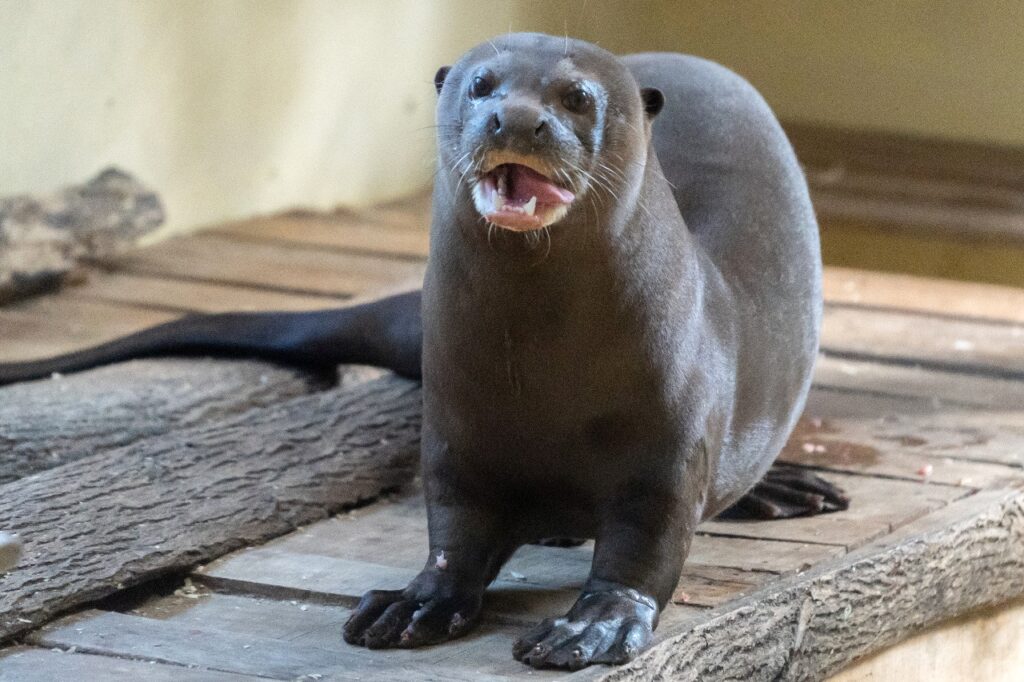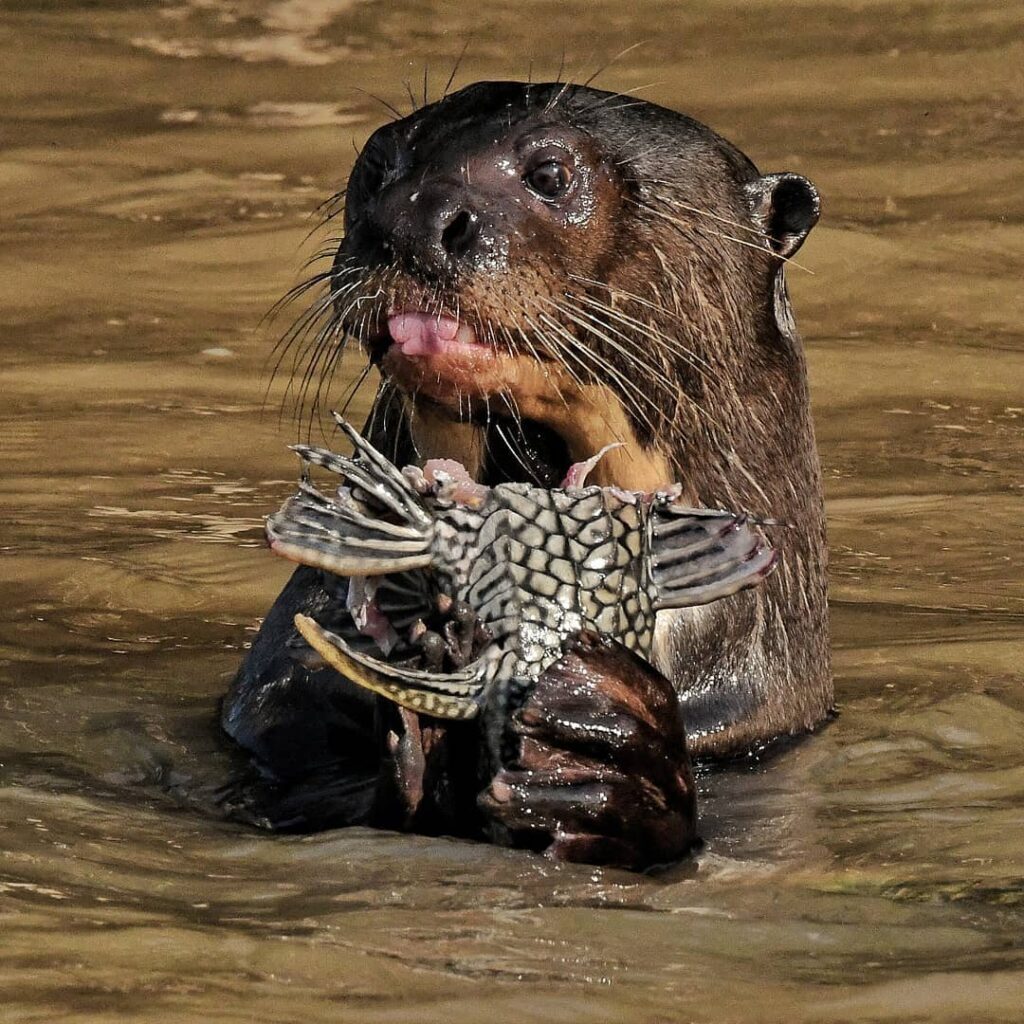The giant otter (Pteronura brasiliensis) was a widely distributed species in South America from northern Argentina to Colombia and Venezuela. However, the intense hunting to which they were subjected to commercialize their skin in the 1950s and 1960s led to the collapse of this species and caused its geographic extinction in much of its original distribution range, generating local extinctions of populations living in the main rivers of the Amazon and Orinoquia (Donadio, 1978; Schenk and Staib, 1998; Velazco, 2004). These circumstances have led to it being categorized globally as “Endangered” (EN) both internationally (IUCN) and nationally. Threats such as the transformation of the habitat, the felling of forests, the contamination of rivers with mercury from gold mining, conflicts with fishermen and the use of young as pets, put the species on the brink of extinction.
During 2020, the WOMEN FOR BIODIVERSITY ORG led a research program in the easternmost extreme of the department of Amazonas in the zone of influence of the Ticuna indigenous territory. Thanks to these studies, the importance of this area for the conservation of giant otters was evidenced. The project presented here fits into the priority specific objective of the recently published “Management Plan for the Conservation of Otters in Colombia” of: Develop research projects and monitoring of otter populations in the different aquatic ecosystems where they are distributed in the country.
Keywords: Giant otter, extinction, Amazon basin, Ticuna indigenous community.


